7 essential
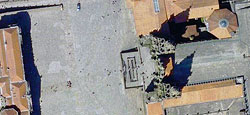
Portico of Glory
This Master Mateo sculpture that flanks the entrance to the cathedral in Santiago took the place of a previous portico that commemorated the transfiguration of Jesus on Mount Tabor. It was a source of much consternation for those who understood the deep meaning behind the Way of St. James, since this transfiguration is precisely what those ancient pilgrims one day hoped to achieve. Father Benigno Fornes explains the tradition in detail in The Lost Angel.
(See chapter 103)
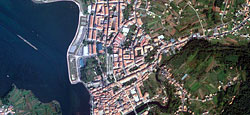
Noia (or Noya)
The small town on the Costa da Morte that is the hometown of Julia Alvarez, The Lost Angel’sprotagonist. Few know that the town’s seal shows Noah’s Ark run aground at the top of Mount Aro or that the town’s name is derived from Noah’s. One local legend has it that a daughter or granddaughter of Noah came to the shores of this town, to the finis terrae, and helped repopulate the world starting more than five thousand years ago. The town is peppered with remnants of prehistoric settlements more than five thousand years old.
(See chapter 41)
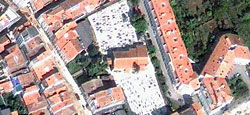
Santa María a Nova
This church is the site of one of the seminal scenes in The Lost Angel. It is built at the center of a medieval cemetery in the center of the seaside town of Noia. Christened in 1327 and built over the ruins of a previous church, it houses hundreds of tombs, some of them up to seven hundred years old. Most are inscribed with symbols of the guilds or trades of the people interred in them, though many symbols have still not been deciphered. However, some of these tombs—lápidas in Spanish—are empty, giving rise to endless theories for why this is. It remains, by far, one of the most mysterious churches in Galicia, even though it has been decommissioned and turned into a museum.
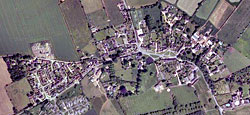
Biddestone
: Small town in the English county of Wiltshire, in the southeast part of Great Britain, where Julia Alvarez and Martin Faber were married in 2005. Its name comes from the term “Bible of Stone.” This is the place that John Dee uses—according to Javier Sierra’s tale (see chapter 39)—to hide one of his mysterious “invocation tablets” to summon angels.
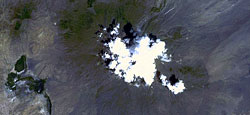
Monte Ararat
Turquía. En la zona se lo llama Agri Daghi, “monte del dolor”. Tiene 5.165 metros y aunque se ubica en territorio de la moderna Turquía es disputado desde hace tiempo por su vecina Armenia. El Ararat es el protagonista “durmiente” de la novela. Su cumbre está cubierta por nieves perpetuas y es alrededor de la cota de sus 4.600 metros donde tiene lugar el momento álgido de la acción de la novela.
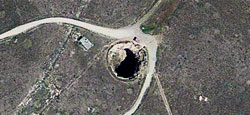
Hallaç
Name of the meteorite impact crater just a few miles from the Gurbulak pass, near the border between Turkey and Iran, where, according to The Lost Angel, Martin Faber and Julia Alvarez's adamantas came from. It's this cosmic origin that makes the stones quite different from the stones found on Earth.
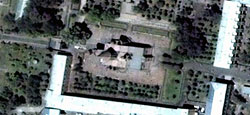
St. Echmiadzin
This cathedral is in the heart of Armenia's sacred city. It's the country's oldest Christian temple and one of the world's oldest, since Armenia was the first country to adopt Christianity as its official religion. Saint Gregory the Illuminator supposedly had a vision while standing on the future site of the cathedral, wherein the heavens parted and a beam of light shone down to mark the spot. A procession of angels traveled down this beam of light with Jesus Christ leading them. He knocked on the ground three times with a golden hammer and two columns rose, one with a base of pure gold, another that was a pillar of fire that blazed into the sky. Legends aside, the fact is this sacred temple was built in the fourth century and houses venerable relics from throughout Christian history, including the very hand of St. Gregory; the Lance of Longinus, named for the Roman soldier who used it to pierce Jesus's side as he hung crucified; and a petrified piece of wood that is said to be part of Noah's Ark. That relic, carbon-dated at more than seven thousand years old, is noted in The Lost Angel.